21 Proven Teaching Strategies to Enhance Student Learning in 2025
Explore 21 proven teaching strategies for 2025, designed to enhance student engagement, deepen learning, and improve classroom outcomes.


Explore 21 proven teaching strategies for 2025, designed to enhance student engagement, deepen learning, and improve classroom outcomes.
Engaging students effectively has never been more critical, as the approach to learning transforms alongside these changes. Direct teaching strategies not only capture attention but also foster deeper comprehension and critical thinking.
In 2025, the methods teachers use must reflect a commitment to student engagement and adaptability. Strategies such as wait time, think-pair-share, and culturally responsive teaching encourage collaboration and embrace diversity within the classroom. Techniques like formative assessments and personalized learning identify individual strengths and weaknesses, providing targeted support for each learner's unique journey.
This article explores 21 evidence-based teaching strategies guaranteed to enhance student learning. From integrating technology to promoting mindfulness practices, these approaches create dynamic hands-on tasks tailored to meet the demands of a rapidly changing world. Professional development through lesson study helps educators refine these strategies collaboratively. Prepare to discover proven methods that will redefine success in education for the future.
Engagement in education directly influences how effectively students learn. A supportive classroom culture creates an equitable and inclusive environment. This positively impacts student engagement. Understanding individual student differences prevents the formation of assumptions about their learning abilities. This helps in tailoring teaching methods to boost engagement.
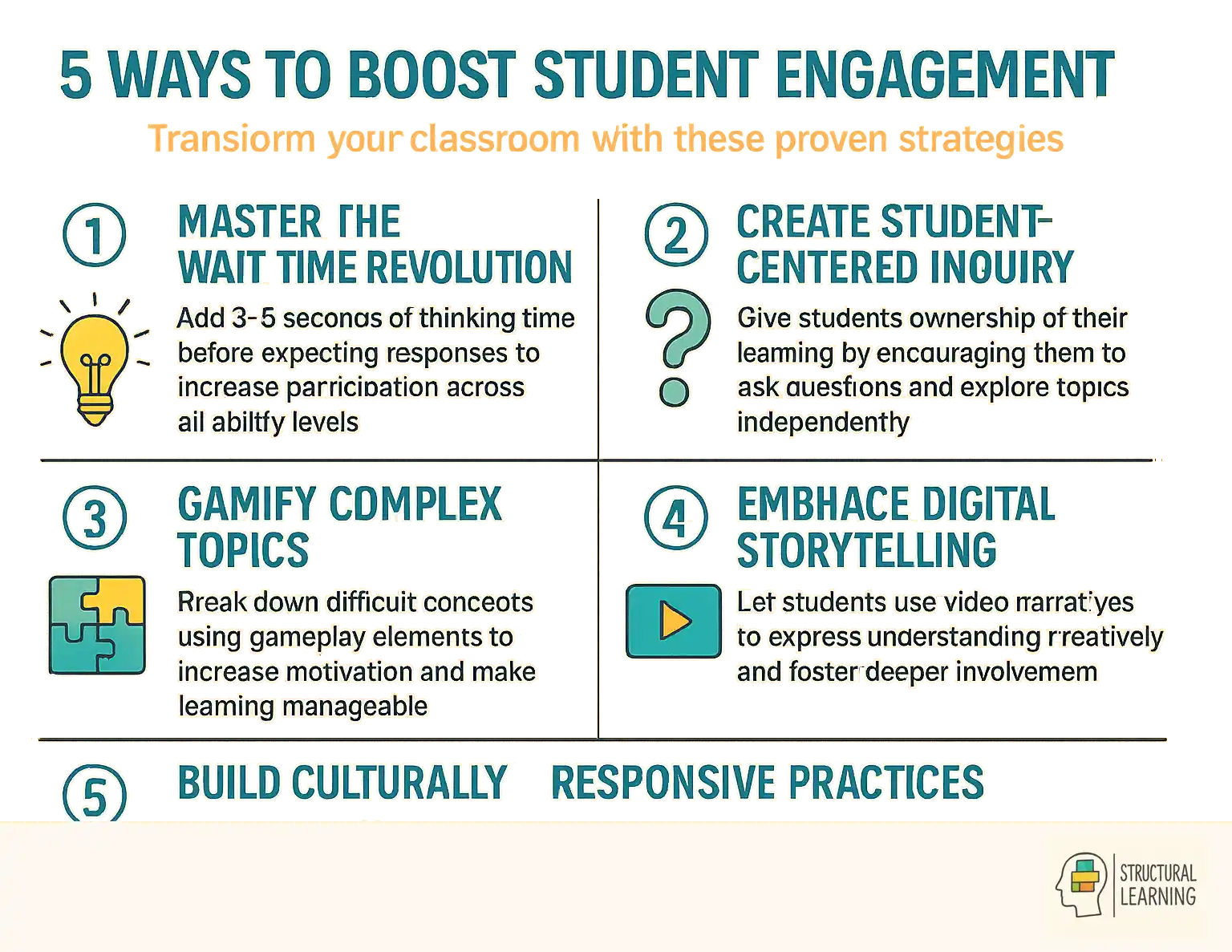
Student-centered inquiry gives students ownership of their learning journey. By asking questions and exploring topics, students become more involved and engaged with the material. Gamification introduces gameplay elements to learning. This encourages motivation by breaking down complex topics in a fun and manageable way.
Digital storytelling is another impactful strategy. It allows students to use video narratives to express their understanding creatively. This method boosts student creativity and fosters deeper involvement.
Consider these engagement strategies:
| Strategy | Benefit |
|---|---|
| Supportive Classroom | Promotes equity and inclusivity |
| Student-Centered Inquiry | Enhances ownership and involvement |
| Gamification | Increases motivation and breaks down complex topics |
| Digital Storytelling | Encourages creativity and personal expression |
Engaging classroom activities lead to improved student performance and a deeper understanding of concepts.
Wait time is a powerful teaching strategy. It involves giving students a few extra seconds to think before responding to questions. Instructors often find this challenging but can track time by counting seconds mentally. Extending wait time fosters deeper understanding by allowing students to gather their thoughts fully before participating.
Incorporating a writing component during this time can be beneficial. When students jot down their thoughts, they gain confidence and clarity. This simple act of writing can also uncover confusion or spark new insights. By collecting these written responses, teachers can hold students accountable and receive valuable feedback.
Reflection prompts further enhance this process. Encouraging students to connect class material to real-life situations improves their critical thinking skills. It also aids in memory retention, making the lessons more impactful.
Consider the following benefits of wait time:
In summary, implementing wait time encourages active learning and enriches classroom discussions, ultimately benefiting the majority of students.
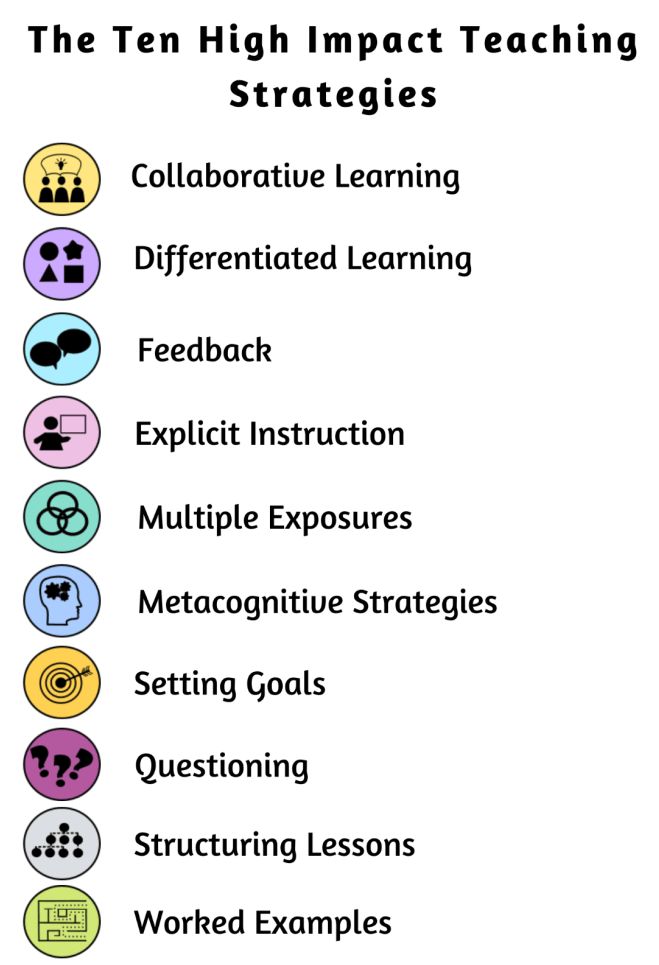
The Think-Pair-Share strategy transforms classrooms into vibrant spaces of learning. This approach encourages students to think about a question, pair up with a partner, and share their thoughts. Students gain a deeper understanding by articulating and comparing ideas with classmates. This method promotes active participation, which is key to classroom participation.
Equity in class discussions is achieved as every student gets the chance to express their views. By fostering collaboration, this strategy helps students realize that diverse opinions enrich learning. The structure of Think-Pair-Share is straightforward yet powerful:
Table: Key Benefits of Think-Pair-Share
| Benefit | Description |
|---|---|
| Enhanced Engagement | Encourages participation from all students |
| Deeper Understanding | Promotes critical thinking and reflection |
| Collaborative Learning | Fosters a sense of community among students |
| Valued Diverse Perspectives | Highlights the importance of different viewpoints |
Think-Pair-Share serves as a valuable tool in creating dynamic classroom activities. Unlike traditional lectures, it lets students explore and discuss different perspectives freely.
Clear teaching, or direct instruction, employs teacher-led techniques to sharpen student learning on specific subjects. This approach centers on frequent questioning and guided practice. Presenting a worked example with a related problem enhances students' engagement with the topic.
Silence during these demonstrations locks students' focus, improving their absorption and retention of information. Teachers pre-teach crucial vocabulary, aiding students in expressing their understanding. This boosts their confidence and depth of conceptual understanding.
An effective explicit instruction strategy features:
Educators closely monitor progress. They employ formative and summative assessments to adjust their teaching as needed. This allows for immediate corrections to address learning gaps.
| Component | Description |
|---|---|
| Interaction | Frequent questioning keeps students engaged. |
| Guidance | Uses clear worked examples in demonstrations. |
| Vocabulary | Pre-teaching helps students express ideas. |
| Evaluation | Enables tracking and adjustment of teaching. |
Clear teaching clarifies teaching processes and ensures a dynamic learning environment.
Active learning strategies focus on student participation, placing them at the heart of the learning process. This shift not only improves learner participation but also enhances understanding.
Reciprocal questioning invites students to create their own questions based on recent lessons or concepts. Such interactions lead to a deeper grasp of the material. Another valuable tool, the pause procedure, breaks class time into intervals of 10 to 15 minutes, encouraging discussion and problem-solving.
Consider the muddiest point strategy. It lets students pinpoint unclear aspects of a lesson, allowing tailored feedback from instructors. This method highlights areas needing further exploration and strengthens conceptual understanding.
Student-centered inquiry promotes ownership of learning. When students reflect on findings and present them to peers or teachers, their literacy skills and critical thinking are exercised.
Here's a quick reference table for some common active learning strategies:
| Strategy | Description |
|---|---|
| Reciprocal Questioning | Students form questions on recent material for deeper insight. |
| Pause Procedure | Lessons are broken into 10-15 minute discussions. |
| Muddiest Point Strategy | Students identify unclear concepts for focus by the instructor. |
Incorporate these techniques to foster active participation and improve student performance.
Culturally responsive teaching centers on the student's individuality, valuing the unique cultural strengths each one brings to the classroom. This approach fosters an environment where cultural differences are celebrated, leading to academic success and a strong ethnic-racial identity.
Research shows that linking educational content to students' lived experiences makes learning more relatable and engaging. This connection transforms class time into a more meaningful experience, reducing feelings of disengagement.
Key Benefits of Culturally Responsive Teaching:
Implementing culturally responsive practices can help educators address the challenges of diverse classrooms, creating opportunities for students to thrive. By integrating students' cultural backgrounds into the curriculum, teachers can ensure that the learning process resonates on a personal level, making concepts easier to grasp.
Table: Impact of Culturally Responsive Teaching
| Benefit | Effect |
|---|---|
| student involvement | Increased interest and participation |
| Conceptual Understanding | Easier grasp of class material |
| Academic Success | Enhanced pupil progress and performance |
| Identity Development | Stronger ethnic-racial identity formation |
Embracing diversity through culturally responsive teaching enriches the educational experience for all students.
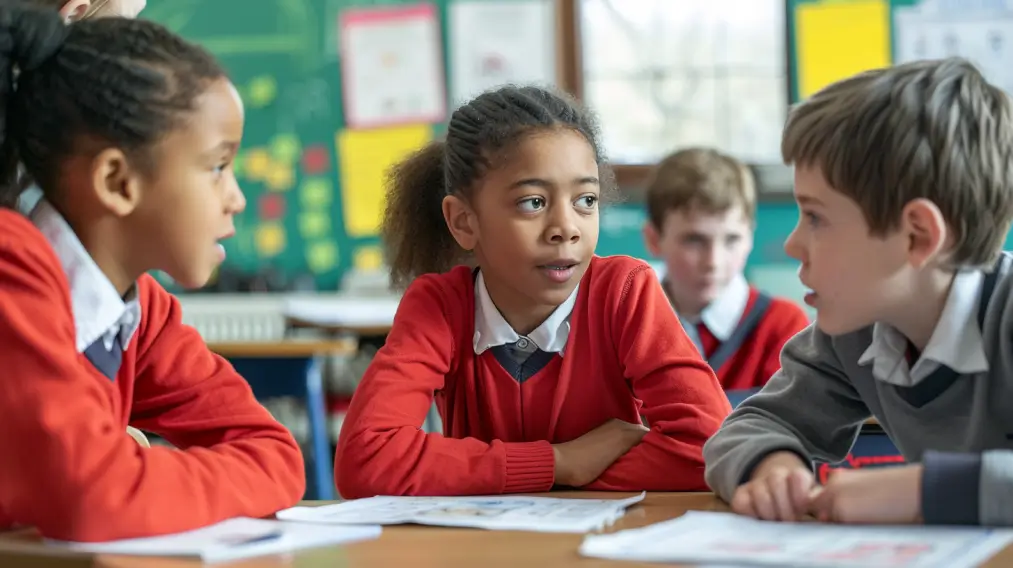
Formative assessments play a crucial role in the learning process. They occur during the teaching process and focus on how students are learning, instead of just evaluating the final output. This approach helps teachers identify any gaps in understanding in real-time. Techniques like think-pair-share, entry and exit tickets, and self-evaluation are powerful tools for gauging student comprehension.
One of the benefits of formative assessments is that they reduce student stress around testing. By providing opportunities for course correction before a unit is complete, students can adjust their learning strategies as needed. Moreover, these assessments enable teachers to adjust instruction, ensuring each student's needs are met.
Here is a list of effective formative assessment techniques:
Additionally, formative assessments engage students, creating a more enjoyable and dynamic learning environment. They also identify students who may need extra support, enhancing overall student performance and engagement. By focusing on the process of learner development, formative assessments offer a more comprehensive approach to monitoring and supporting student progress.
Personalized learning fine-tunes educational lessons to each student's unique abilities. This approach promotes greater engagement and involvement throughout their learning process. According to a study by the Gates Foundation, personalized learning methods can yield significant improvements in math and reading test scores when applied in classrooms. The personalized learning framework allows students to progress without stigma, supporting a positive and inclusive educational environment.
Educational technology (Edtech) plays a key role in customizing these lessons. Teachers can use tools like learning management systems and adaptive software to track students' progress and tailor class material accordingly. This method prioritizes individual learning needs, enhancing academic outcomes across a wide range of subjects.
Key Benefits of Personalized Learning:
Implementing targeted teaching strategies tailored to individual needs ensures that educational practices are both dynamic and impactful. This approach supports students in achieving their full potential.
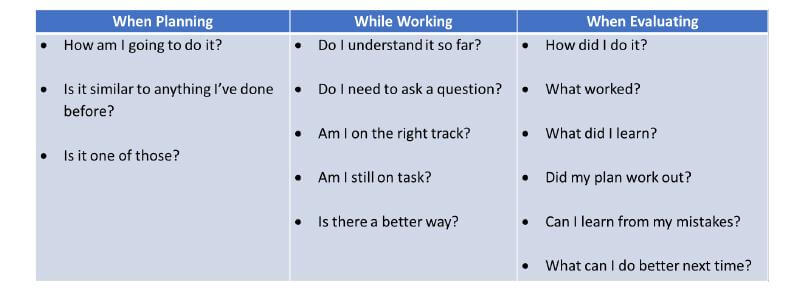
Scaffolding offers a structured method to enhance problem-solving skills by gradually shifting responsibility from teacher to student. The "I do, We do, You do" approach exemplifies this process, managing cognitive load and deepening understanding. Through this method, educators begin by demonstrating a task, then assist students in completing it together, and finally provide opportunities for students to practice independently. This gradual release supports educational growth effectively.
Scaffolding can be tailored to provide cognitive, metacognitive, and procedural support. These strategies maintain active learning and secure successful learning outcomes. For example, when educators emphasize joint construction, they adapt their methods to meet individual student needs, creating deeper hands-on tasks.
Here's how scaffolding techniques structure learning:
Tables and lists can be a valuable tool when introducing new class material, offering clarity during the learning process. By providing opportunities for students to engage with material in varied ways, scaffolding ultimately builds a dynamic learning environment.
Technology enhances lessons by increasing classroom participation. Virtual reality offers opportunities for immersive exploration. Students can take field trips to places like the Great Barrier Reef or Barcelona, broadening their understanding of ecosystems and cultures. Video mini-lessons on platforms like TeacherTube cater to learners that lean towards visuals, making lessons interactive.
Podcasts can serve older students a chance to create content. This fosters research and technology skills. Integrating technology effectively involves collaborative methods that align with instructional goals.
Technology Integration Strategies:
Technology integration supports a dynamic learning environment and boosts student performance. Each tool must align with educational practices to maximize benefits. When aligned with goals, these tools enhance the learning process and conceptual understanding.
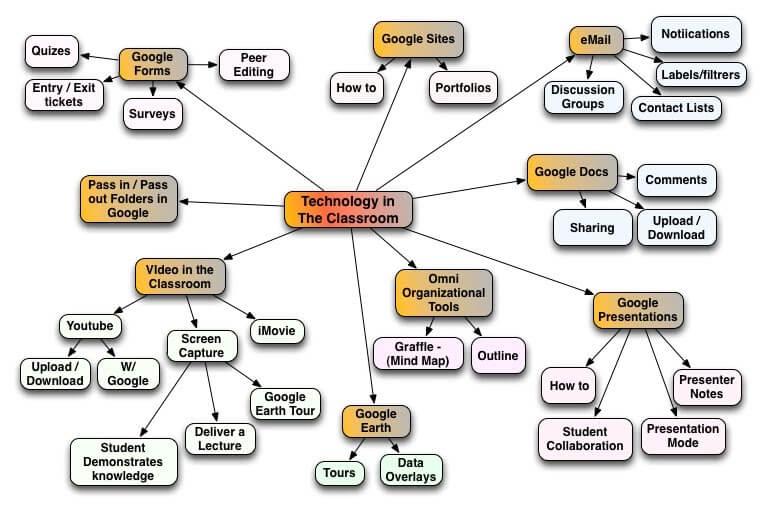
Cooperative learning engages students in structured tasks that boost communication and teamwork. Techniques like think-pair-share encourage students to interact, promoting a dynamic learning environment. Cubing is another effective strategy. It asks students to respond to questions on a cube's sides, sparking a wide range of responses and engagement.
In blending competition with cooperation, students can enhance their group dynamics. The key is making sure that learning remains a priority over competition.
Differentiated instruction works well with cooperative learning. It allows educators to adjust tasks based on each student's skills and interests, creating opportunities for students to contribute in varied ways.
Peer teaching, when guided effectively by educators, builds students' ability to give constructive feedback. This enhances both their understanding and interpersonal skills.
Here's a brief list of cooperative learning strategies:
Tasks structured around these strategies create a dynamic learning environment where diverse responses and ideas can flourish. This approach not only promotes learner motivation but also deepens their conceptual understanding and critical thinking capabilities.
Inquiry-based learning empowers students to drive their curiosity. It positions them as active learners, allowing exploration of topics and self-directed question-asking. Students become investigators, not just knowledge receivers. There are four main types of inquiry-based learning:
Research from the Association for Psychological Science shows that students retain more information with inquiry-based learning. Class management strategies like "Think, pair, share" further enhance engagement. This approach encourages students to articulate their thoughts, aiding literacy skills and critical thinking. It values student contributions, making class discussions more dynamic and inclusive.
Overall, inquiry-based learning provides a framework for students to achieve a deeper understanding of concepts, fostering both individual and collaborative learning opportunities.
Multimodal instruction engages diverse learning styles, enhancing student understanding and retention. By incorporating visual, auditory, and kinesthetic elements, teachers create dynamic learning environments where every student can thrive. Incorporating visuals like charts and diagrams can open up abstract ideas, while discussions and lectures appeal to children who prefer talk-based learning. Hands-on activities meet the needs of kinesthetic learners, providing practical engagement.
To tailor instruction further, differentiation strategies such as interleaving and formative assessment allow teachers to personalize learning. These approaches adapt content to suit individual student needs, promoting deeper conceptual understanding. Utilizing a range of instructional strategies not only boosts student performance but also fosters critical thinking skills.
*Whilst there isn't any evidence to support the idea that we have a fixed learning style, the idea of having different domains of learning is evidence-informed. For example, embodied cognition supports the notion that we use our hands to think.
Here's a quick overview of activities for each type of learning:
| Learning Domain | Activity Example |
|---|---|
| Visual | Infographics and charts |
| Auditory | Group discussions and podcasts |
| Kinesthetic | Experiments and role-playing |
Praising students for their efforts and progress encourages active participation, making the learning process more engaging. By embracing multimodal instruction, educators provide students with valuable opportunities to learn in ways that resonate with them, improving overall engagement and understanding.

Feedback loops play a key role in education by fostering critical thinking and problem-solving skills. They create a collaborative and engaging learning environment. To start, gather feedback from students and teachers. This step is vital for a school improvement plan aimed at enhancing teaching strategies and learning outcomes.
Using tools like Google Forms to collect student feedback on new teaching strategies allows educators to assess their methods. With this data, teachers can make necessary adjustments. Instructional strategies help with monitoring and assessing student performance. This enables ongoing improvement in teaching practices.
Moreover, targeted teaching strategies boost learner participation. They help students form meaningful connections between learned concepts and real-life situations. Here's a simple process to implement feedback loops:
Creating a positive learning community hinges on establishing clear classroom norms. These norms set the stage for an inclusive environment where students feel valued and inspired to share ideas. Common principles might include: "Everyone here has something to learn" and "All ideas shared during class will be treated respectfully."
Reinforcing these norms consistently throughout the term is critical. When instructors regularly reiterate them, it helps ensure students understand the importance of maintaining these practices. Moreover, instructors actively observing and enforcing the norms play a crucial role in molding student behavior. Their actions significantly influence students' willingness to engage in class discussions.
Ridicule can severely impact a student's confidence, discouraging them from contributing. Therefore, instructors must provide support and reassurance, particularly to those who feel uneasy sharing their thoughts. The table below highlights some foundational norms:
| Norm | Purpose |
|---|---|
| Everyone has something to learn | Fosters a growth mindset among students |
| Respect all shared ideas | Encourages open and safe discussions |
This collaborative effort in establishing norms fosters a dynamic learning environment, enhancing student involvement and ensuring academic growth.
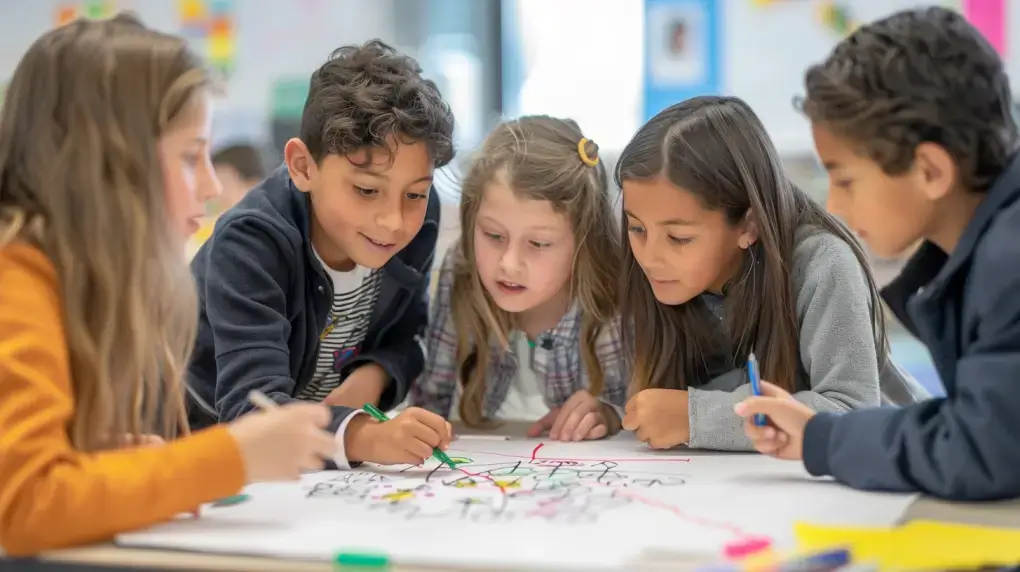
Gamification transforms play into a learning passion by boosting focus and skill development. A 2011 study in South Korea showed that gamification significantly raises student motivation and engagement in classrooms. By using game mechanics and design, it makes complex topics simpler and aligns them with learning goals.
Techniques merge into traditional and e-learning settings to form flexible learning spaces. Understanding student interests is key. It ensures gamification techniques match classroom needs and behavior issues are minimized.
Here's how to integrate gamification into education:
Project-Based Learning (PBL) invites students to dive into authentic problems with real-world relevance. It encourages active participation, where students shape their learning journey. The open-ended format promotes collaborative exploration, guiding students to devise their own solutions.
An interactive table highlights key PBL characteristics:
| Feature | Description |
|---|---|
| Active Role | Students engage directly in learning tasks. |
| Group Work | Encourages teamwork and cooperative problem-solving. |
| Critical Thinking | Fosters skills needed for deep analysis. |
| Knowledge Retention | Enhances long-term memory of learned content. |
| Open-Ended Format | Supports a wide range of approaches and solutions. |
However, some critiques arise. The focus on product creation might overshadow the actual learning process, and assessments in project-based settings can be subjective. Adjusting PBL to fit different class sizes, student abilities, and learning styles is crucial for maximizing its effectiveness.
Ultimately, PBL aims to boost active learning and conceptual understanding. It equips learners with the skills necessary for the dynamic learning environment of today.
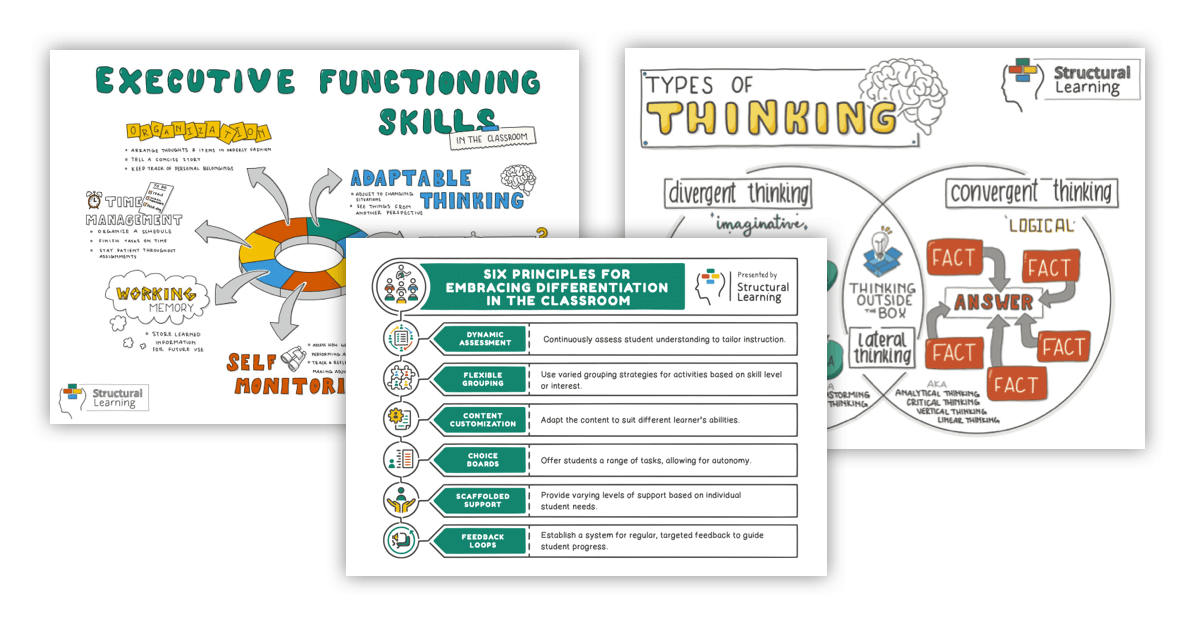
Differentiated instruction embraces diverse learning styles within classrooms by tailoring content and processes. Carol Ann Tomlinson advocates for educators to frequently reflect on and adjust their teaching strategies. This ensures alignment with educational philosophies and academic development goals.
Teachers can use varied activities to meet different needs. Learning stations and think-pair-share methods offer unique lessons. These methods promote classroom participation and critical thinking. Moreover, assessments play a significant role. They allow learners to access knowledge in ways suited to their interests and skills.
Grouping students based on their methods for solving problems can further enhance engagement. Rotating through different classroom activities deepens understanding. This approach ensures that the majority of students benefit from instructional strategies.
Self-regulated learning empowers students by fostering critical thinking about their own thought processes. This metacognitive approach can enhance academic progress by an average of seven months. Students who adopt metacognitive strategies learn to plan, monitor, and evaluate their learning, which boosts motivation and effort during class time.
Personalized learning strategies play a big role in this process. By aligning with students' interests, these strategies increase engagement, leading to greater independence and ownership. Universal Design for Learning (UDL) supports self-regulated learning by offering flexible ways to accommodate diverse learners.
Active learning approaches further promote independence by encouraging students to take charge of their educational path. These methods develop strategic learners who can select the right strategies to achieve their goals.
Below is a table summarizing key strategies:
| Strategy | Impact |
|---|---|
| Metacognitive Strategies | Enhances planning and self-evaluation |
| Personalized Learning | Increases engagement and independence |
| Universal Design for Learning (UDL) | Accommodates diverse needs |
| Active Learning | Fosters strategic thinking in students |
All these techniques combined create a dynamic learning environment where students are at the forefront of their educational journey.
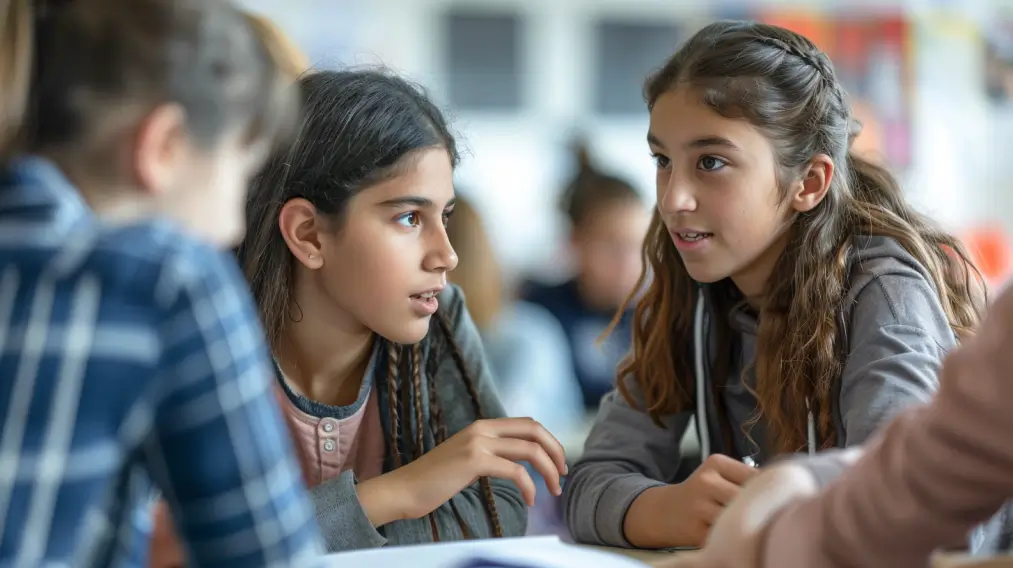
Mindfulness practices can transform a classroom environment. By reducing stress and improving focus, they enhance student well-being and engagement. Integrating social-emotional learning (SEL) competencies into teaching promotes mindfulness effectively.
Educators can incorporate guided imagery and deep breathing exercises to help students concentrate better. These activities are valuable tools in creating a more dynamic learning environment. Engaging students in mindfulness topics within academic content helps them practice and develop these skills effectively.
A classroom that encourages mindfulness significantly improves knowledge acquisition and engagement. This environment offers students opportunities to boost their focus and critical thinking. Here are some practices to consider incorporating:
Incorporating these practices into daily lessons will lead to a deeper understanding and enhanced performance among the majority of students. Mindfulness activities within class sessions foster a supportive atmosphere, promoting both the learning process and student-led discussions.
Learning stations present a dynamic method for engaging students in hands-on learning. This targeted teaching strategy allows educators to address diverse learning styles within their classrooms. Each station offers distinct activities tailored to different preferences and needs, ensuring all students receive valuable learning opportunities.
Consider the following benefits of learning stations:
By utilizing learning stations, teachers can create a rich and responsive learning environment, where the majority of students find ways to connect with the class material.
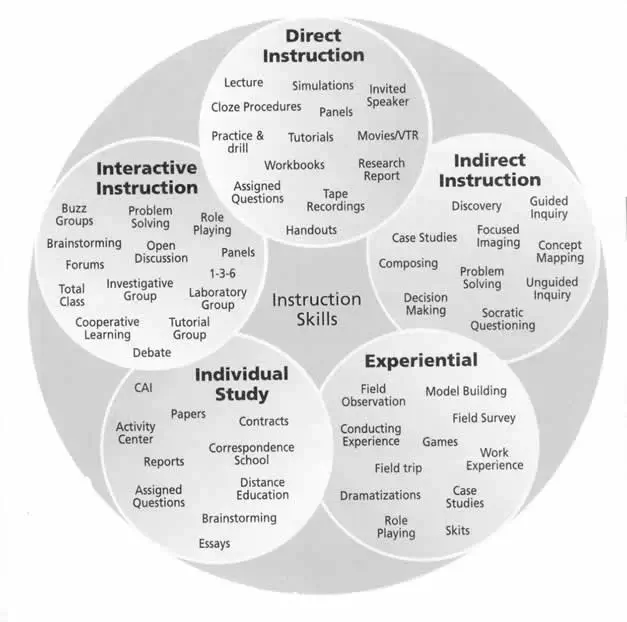
Reflective practices serve as valuable tools in promoting critical thinking skills among students. Through using notebooks and digital platforms, learners can engage in reflection, pinpointing areas needing improvement in their learning journey. These practices lead to a deeper conceptual understanding and improved student performance.
Collecting student feedback plays a key role in refining educational practices. Educators can employ debriefing techniques to enhance lessons, ensuring the majority of students benefit. Implementing targeted teaching strategies like formative assessment enables learner participation and creativity while emphasizing critical thinking.
Differentiated learning opportunities cater to diverse needs, while context-agnostic problem-solving must build on a foundation of domain knowledge and practice. Teaching thinking skills explicitly allows students to focus on understanding the core structures of problems more effectively.
Here's a quick breakdown of reflective practices benefits:
| Practice | Benefit |
|---|---|
| Reflective Notebooks | Identifies improvement areas |
| Digital Platforms | Encourages regular reflections |
| Feedback Collection | Informs teaching adjustments |
| Problem-Solving Skills | Deepens understanding of concepts |
Overall, reflective practices enhance critical thinking by guiding students toward more profound learning and understanding.
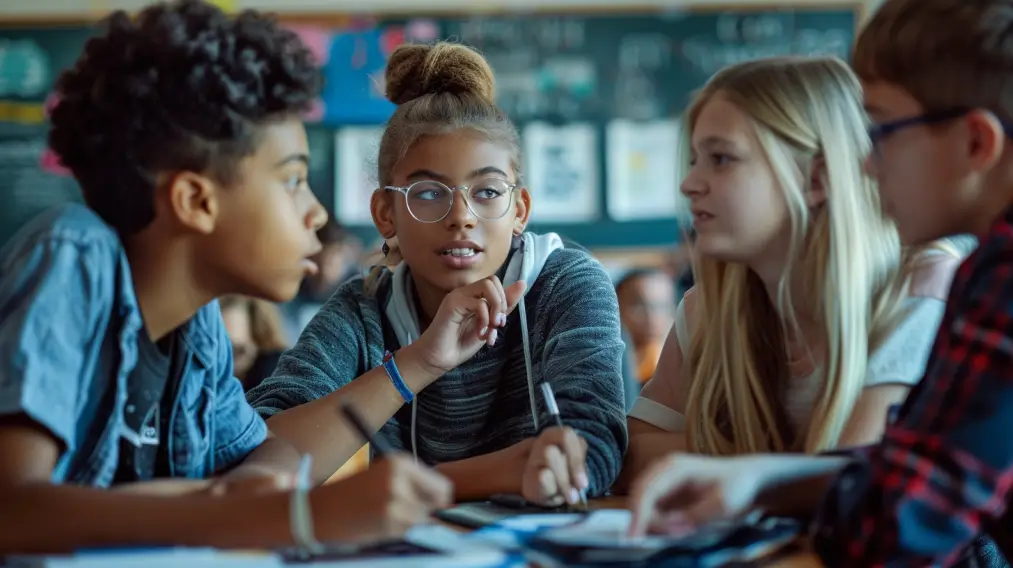 that work" width="auto" height="auto" id="">
that work" width="auto" height="auto" id="">The adoption of targeted teaching strategies transforms education into an explorative and engaging journey. By concentrating on critical thinking and problem-solving, these strategies elevate the learning process. Educators enhance understanding through dynamic presentations of class material. A feedback loop involving students and teachers provides valuable insights, propelling improvements in instructional strategies. A successful future for education lies in creating a collaborative learning space with clear objectives guided by research-backed strategies.
These strategies not only boost student engagement but also improve performance and deepen conceptual understanding. As student success rates rise, positive relationships foster stronger school communities. Consider the following when integrating these approaches:
Adopting such a wide range of methods ensures majority of students gain not just literacy skills but grow into lifelong learners.
These studies collectively highlight that structured pre-teaching practices, scaffolded activities, and reflective teaching methods significantly improve teacher effectiveness and student outcomes across diverse educational settings.
1. Dunst et al. (2019), Research Synthesis of Meta-Analyses of Preservice Teacher Preparation Practices in Higher Education
This large-scale meta-analysis synthesized findings from over 118 meta-analyses, covering approximately 5,000-6,000 studies. The study identified that clinically rich field experiences, project-based learning, deliberate practice, and coaching were among the most effective pre-teaching practices. It emphasized that structured classroom time and experiential learning were key factors in improving teacher efficacy.
2. Chesnut & Burley (2015), Self-Efficacy as a Predictor of Commitment to the Teaching Profession
This meta-analysis examined how pre-teaching activities influenced teachers' long-term commitment. It found that structured reflection, open-ended questions, and exposure to real classroom settings significantly impacted teaching effectiveness. The study highlighted the role of pre-teaching strategies in fostering teachers' confidence and retention in the profession.
3. Täschner et al. (2024), A Systematic Review and Meta-Analysis of Intervention Studies Promoting Teacher Self-Efficacy
This systematic review examined over 115 studies, revealing that interventions emphasizing mastery hands-on tasks, guided reflection, and targeted coaching were the most effective. The study concluded that purposeful thinking, structured mentoring, and scaffolded feedback played essential roles in developing essential teaching skills across various subject areas, including for English language learners.
4. Song & Kim (2022), The Effects of Teaching Experience on the Teacher Efficacy of Pre-Service English Language Teachers
This study investigated how different pre-teaching approaches, including classroom observation, scaffolded teaching practice, and lesson planning, affected teacher efficacy. It found that hands-on exposure to structured classroom time and using key concepts to guide learning improved outcomes, particularly in remote learning settings.
5. Seo & Moon (2013), A Comparative Study of Teaching Efficacy in Pre-Service and In-Service Teachers
This research compared the effectiveness of various pre-teaching practices across different levels of teaching experience. The findings emphasized the benefits of project-based learning, peer feedback, and classroom simulations in elementary schools. The study reinforced that engaging students with open-ended questions and basic concepts early in teacher training led to higher long-term teaching efficacy.
Wait time involves giving students 3-5 seconds of thinking time before they respond to questions, rather than expecting immediate answers. Teachers can track this by counting seconds mentally, and adding a writing component during this time helps students gather their thoughts and gain confidence before participating.
Think-Pair-Share creates equity in class discussions by giving every student a structured opportunity to express their views through the three-step process of individual reflection, partner discussion, and class sharing. This method particularly benefits students who never raise their hands in traditional lessons, as they can build confidence through the pairing stage before sharing with the larger group.
Gamification and digital storytelling outperform traditional methods because they address the engagement crisis in our screen-saturated classrooms by meeting students where they are technologically. Gamification breaks down complex topics into fun, manageable elements that increase motivation, whilst digital storytelling allows students to use video narratives to express understanding creatively.
Culturally responsive teaching involves valuing and incorporating students' individual backgrounds into learning activities, which dramatically improves achievement gaps by creating truly inclusive classroom environments. This approach helps teachers understand individual student differences and prevents assumptions about learning abilities, allowing for more tailored and effective teaching methods.
Explicit instruction employs teacher-led techniques with frequent questioning, guided practice, and worked examples that improve student focus and retention. Teachers pre-teach crucial vocabulary to boost student confidence, and use formative and summative assessments to monitor progress and make immediate adjustments to address learning gaps.
The muddiest point strategy allows students to identify unclear aspects of a lesson, providing teachers with targeted feedback about what needs further explanation. This method, combined with techniques like reciprocal questioning where students create their own questions, places learners at the heart of the learning process and enhances understanding through active participation.
Engaging students effectively has never been more critical, as the approach to learning transforms alongside these changes. Direct teaching strategies not only capture attention but also foster deeper comprehension and critical thinking.
In 2025, the methods teachers use must reflect a commitment to student engagement and adaptability. Strategies such as wait time, think-pair-share, and culturally responsive teaching encourage collaboration and embrace diversity within the classroom. Techniques like formative assessments and personalized learning identify individual strengths and weaknesses, providing targeted support for each learner's unique journey.
This article explores 21 evidence-based teaching strategies guaranteed to enhance student learning. From integrating technology to promoting mindfulness practices, these approaches create dynamic hands-on tasks tailored to meet the demands of a rapidly changing world. Professional development through lesson study helps educators refine these strategies collaboratively. Prepare to discover proven methods that will redefine success in education for the future.
Engagement in education directly influences how effectively students learn. A supportive classroom culture creates an equitable and inclusive environment. This positively impacts student engagement. Understanding individual student differences prevents the formation of assumptions about their learning abilities. This helps in tailoring teaching methods to boost engagement.

Student-centered inquiry gives students ownership of their learning journey. By asking questions and exploring topics, students become more involved and engaged with the material. Gamification introduces gameplay elements to learning. This encourages motivation by breaking down complex topics in a fun and manageable way.
Digital storytelling is another impactful strategy. It allows students to use video narratives to express their understanding creatively. This method boosts student creativity and fosters deeper involvement.
Consider these engagement strategies:
| Strategy | Benefit |
|---|---|
| Supportive Classroom | Promotes equity and inclusivity |
| Student-Centered Inquiry | Enhances ownership and involvement |
| Gamification | Increases motivation and breaks down complex topics |
| Digital Storytelling | Encourages creativity and personal expression |
Engaging classroom activities lead to improved student performance and a deeper understanding of concepts.
Wait time is a powerful teaching strategy. It involves giving students a few extra seconds to think before responding to questions. Instructors often find this challenging but can track time by counting seconds mentally. Extending wait time fosters deeper understanding by allowing students to gather their thoughts fully before participating.
Incorporating a writing component during this time can be beneficial. When students jot down their thoughts, they gain confidence and clarity. This simple act of writing can also uncover confusion or spark new insights. By collecting these written responses, teachers can hold students accountable and receive valuable feedback.
Reflection prompts further enhance this process. Encouraging students to connect class material to real-life situations improves their critical thinking skills. It also aids in memory retention, making the lessons more impactful.
Consider the following benefits of wait time:
In summary, implementing wait time encourages active learning and enriches classroom discussions, ultimately benefiting the majority of students.

The Think-Pair-Share strategy transforms classrooms into vibrant spaces of learning. This approach encourages students to think about a question, pair up with a partner, and share their thoughts. Students gain a deeper understanding by articulating and comparing ideas with classmates. This method promotes active participation, which is key to classroom participation.
Equity in class discussions is achieved as every student gets the chance to express their views. By fostering collaboration, this strategy helps students realize that diverse opinions enrich learning. The structure of Think-Pair-Share is straightforward yet powerful:
Table: Key Benefits of Think-Pair-Share
| Benefit | Description |
|---|---|
| Enhanced Engagement | Encourages participation from all students |
| Deeper Understanding | Promotes critical thinking and reflection |
| Collaborative Learning | Fosters a sense of community among students |
| Valued Diverse Perspectives | Highlights the importance of different viewpoints |
Think-Pair-Share serves as a valuable tool in creating dynamic classroom activities. Unlike traditional lectures, it lets students explore and discuss different perspectives freely.
Clear teaching, or direct instruction, employs teacher-led techniques to sharpen student learning on specific subjects. This approach centers on frequent questioning and guided practice. Presenting a worked example with a related problem enhances students' engagement with the topic.
Silence during these demonstrations locks students' focus, improving their absorption and retention of information. Teachers pre-teach crucial vocabulary, aiding students in expressing their understanding. This boosts their confidence and depth of conceptual understanding.
An effective explicit instruction strategy features:
Educators closely monitor progress. They employ formative and summative assessments to adjust their teaching as needed. This allows for immediate corrections to address learning gaps.
| Component | Description |
|---|---|
| Interaction | Frequent questioning keeps students engaged. |
| Guidance | Uses clear worked examples in demonstrations. |
| Vocabulary | Pre-teaching helps students express ideas. |
| Evaluation | Enables tracking and adjustment of teaching. |
Clear teaching clarifies teaching processes and ensures a dynamic learning environment.
Active learning strategies focus on student participation, placing them at the heart of the learning process. This shift not only improves learner participation but also enhances understanding.
Reciprocal questioning invites students to create their own questions based on recent lessons or concepts. Such interactions lead to a deeper grasp of the material. Another valuable tool, the pause procedure, breaks class time into intervals of 10 to 15 minutes, encouraging discussion and problem-solving.
Consider the muddiest point strategy. It lets students pinpoint unclear aspects of a lesson, allowing tailored feedback from instructors. This method highlights areas needing further exploration and strengthens conceptual understanding.
Student-centered inquiry promotes ownership of learning. When students reflect on findings and present them to peers or teachers, their literacy skills and critical thinking are exercised.
Here's a quick reference table for some common active learning strategies:
| Strategy | Description |
|---|---|
| Reciprocal Questioning | Students form questions on recent material for deeper insight. |
| Pause Procedure | Lessons are broken into 10-15 minute discussions. |
| Muddiest Point Strategy | Students identify unclear concepts for focus by the instructor. |
Incorporate these techniques to foster active participation and improve student performance.
Culturally responsive teaching centers on the student's individuality, valuing the unique cultural strengths each one brings to the classroom. This approach fosters an environment where cultural differences are celebrated, leading to academic success and a strong ethnic-racial identity.
Research shows that linking educational content to students' lived experiences makes learning more relatable and engaging. This connection transforms class time into a more meaningful experience, reducing feelings of disengagement.
Key Benefits of Culturally Responsive Teaching:
Implementing culturally responsive practices can help educators address the challenges of diverse classrooms, creating opportunities for students to thrive. By integrating students' cultural backgrounds into the curriculum, teachers can ensure that the learning process resonates on a personal level, making concepts easier to grasp.
Table: Impact of Culturally Responsive Teaching
| Benefit | Effect |
|---|---|
| student involvement | Increased interest and participation |
| Conceptual Understanding | Easier grasp of class material |
| Academic Success | Enhanced pupil progress and performance |
| Identity Development | Stronger ethnic-racial identity formation |
Embracing diversity through culturally responsive teaching enriches the educational experience for all students.

Formative assessments play a crucial role in the learning process. They occur during the teaching process and focus on how students are learning, instead of just evaluating the final output. This approach helps teachers identify any gaps in understanding in real-time. Techniques like think-pair-share, entry and exit tickets, and self-evaluation are powerful tools for gauging student comprehension.
One of the benefits of formative assessments is that they reduce student stress around testing. By providing opportunities for course correction before a unit is complete, students can adjust their learning strategies as needed. Moreover, these assessments enable teachers to adjust instruction, ensuring each student's needs are met.
Here is a list of effective formative assessment techniques:
Additionally, formative assessments engage students, creating a more enjoyable and dynamic learning environment. They also identify students who may need extra support, enhancing overall student performance and engagement. By focusing on the process of learner development, formative assessments offer a more comprehensive approach to monitoring and supporting student progress.
Personalized learning fine-tunes educational lessons to each student's unique abilities. This approach promotes greater engagement and involvement throughout their learning process. According to a study by the Gates Foundation, personalized learning methods can yield significant improvements in math and reading test scores when applied in classrooms. The personalized learning framework allows students to progress without stigma, supporting a positive and inclusive educational environment.
Educational technology (Edtech) plays a key role in customizing these lessons. Teachers can use tools like learning management systems and adaptive software to track students' progress and tailor class material accordingly. This method prioritizes individual learning needs, enhancing academic outcomes across a wide range of subjects.
Key Benefits of Personalized Learning:
Implementing targeted teaching strategies tailored to individual needs ensures that educational practices are both dynamic and impactful. This approach supports students in achieving their full potential.

Scaffolding offers a structured method to enhance problem-solving skills by gradually shifting responsibility from teacher to student. The "I do, We do, You do" approach exemplifies this process, managing cognitive load and deepening understanding. Through this method, educators begin by demonstrating a task, then assist students in completing it together, and finally provide opportunities for students to practice independently. This gradual release supports educational growth effectively.
Scaffolding can be tailored to provide cognitive, metacognitive, and procedural support. These strategies maintain active learning and secure successful learning outcomes. For example, when educators emphasize joint construction, they adapt their methods to meet individual student needs, creating deeper hands-on tasks.
Here's how scaffolding techniques structure learning:
Tables and lists can be a valuable tool when introducing new class material, offering clarity during the learning process. By providing opportunities for students to engage with material in varied ways, scaffolding ultimately builds a dynamic learning environment.
Technology enhances lessons by increasing classroom participation. Virtual reality offers opportunities for immersive exploration. Students can take field trips to places like the Great Barrier Reef or Barcelona, broadening their understanding of ecosystems and cultures. Video mini-lessons on platforms like TeacherTube cater to learners that lean towards visuals, making lessons interactive.
Podcasts can serve older students a chance to create content. This fosters research and technology skills. Integrating technology effectively involves collaborative methods that align with instructional goals.
Technology Integration Strategies:
Technology integration supports a dynamic learning environment and boosts student performance. Each tool must align with educational practices to maximize benefits. When aligned with goals, these tools enhance the learning process and conceptual understanding.

Cooperative learning engages students in structured tasks that boost communication and teamwork. Techniques like think-pair-share encourage students to interact, promoting a dynamic learning environment. Cubing is another effective strategy. It asks students to respond to questions on a cube's sides, sparking a wide range of responses and engagement.
In blending competition with cooperation, students can enhance their group dynamics. The key is making sure that learning remains a priority over competition.
Differentiated instruction works well with cooperative learning. It allows educators to adjust tasks based on each student's skills and interests, creating opportunities for students to contribute in varied ways.
Peer teaching, when guided effectively by educators, builds students' ability to give constructive feedback. This enhances both their understanding and interpersonal skills.
Here's a brief list of cooperative learning strategies:
Tasks structured around these strategies create a dynamic learning environment where diverse responses and ideas can flourish. This approach not only promotes learner motivation but also deepens their conceptual understanding and critical thinking capabilities.
Inquiry-based learning empowers students to drive their curiosity. It positions them as active learners, allowing exploration of topics and self-directed question-asking. Students become investigators, not just knowledge receivers. There are four main types of inquiry-based learning:
Research from the Association for Psychological Science shows that students retain more information with inquiry-based learning. Class management strategies like "Think, pair, share" further enhance engagement. This approach encourages students to articulate their thoughts, aiding literacy skills and critical thinking. It values student contributions, making class discussions more dynamic and inclusive.
Overall, inquiry-based learning provides a framework for students to achieve a deeper understanding of concepts, fostering both individual and collaborative learning opportunities.
Multimodal instruction engages diverse learning styles, enhancing student understanding and retention. By incorporating visual, auditory, and kinesthetic elements, teachers create dynamic learning environments where every student can thrive. Incorporating visuals like charts and diagrams can open up abstract ideas, while discussions and lectures appeal to children who prefer talk-based learning. Hands-on activities meet the needs of kinesthetic learners, providing practical engagement.
To tailor instruction further, differentiation strategies such as interleaving and formative assessment allow teachers to personalize learning. These approaches adapt content to suit individual student needs, promoting deeper conceptual understanding. Utilizing a range of instructional strategies not only boosts student performance but also fosters critical thinking skills.
*Whilst there isn't any evidence to support the idea that we have a fixed learning style, the idea of having different domains of learning is evidence-informed. For example, embodied cognition supports the notion that we use our hands to think.
Here's a quick overview of activities for each type of learning:
| Learning Domain | Activity Example |
|---|---|
| Visual | Infographics and charts |
| Auditory | Group discussions and podcasts |
| Kinesthetic | Experiments and role-playing |
Praising students for their efforts and progress encourages active participation, making the learning process more engaging. By embracing multimodal instruction, educators provide students with valuable opportunities to learn in ways that resonate with them, improving overall engagement and understanding.

Feedback loops play a key role in education by fostering critical thinking and problem-solving skills. They create a collaborative and engaging learning environment. To start, gather feedback from students and teachers. This step is vital for a school improvement plan aimed at enhancing teaching strategies and learning outcomes.
Using tools like Google Forms to collect student feedback on new teaching strategies allows educators to assess their methods. With this data, teachers can make necessary adjustments. Instructional strategies help with monitoring and assessing student performance. This enables ongoing improvement in teaching practices.
Moreover, targeted teaching strategies boost learner participation. They help students form meaningful connections between learned concepts and real-life situations. Here's a simple process to implement feedback loops:
Creating a positive learning community hinges on establishing clear classroom norms. These norms set the stage for an inclusive environment where students feel valued and inspired to share ideas. Common principles might include: "Everyone here has something to learn" and "All ideas shared during class will be treated respectfully."
Reinforcing these norms consistently throughout the term is critical. When instructors regularly reiterate them, it helps ensure students understand the importance of maintaining these practices. Moreover, instructors actively observing and enforcing the norms play a crucial role in molding student behavior. Their actions significantly influence students' willingness to engage in class discussions.
Ridicule can severely impact a student's confidence, discouraging them from contributing. Therefore, instructors must provide support and reassurance, particularly to those who feel uneasy sharing their thoughts. The table below highlights some foundational norms:
| Norm | Purpose |
|---|---|
| Everyone has something to learn | Fosters a growth mindset among students |
| Respect all shared ideas | Encourages open and safe discussions |
This collaborative effort in establishing norms fosters a dynamic learning environment, enhancing student involvement and ensuring academic growth.

Gamification transforms play into a learning passion by boosting focus and skill development. A 2011 study in South Korea showed that gamification significantly raises student motivation and engagement in classrooms. By using game mechanics and design, it makes complex topics simpler and aligns them with learning goals.
Techniques merge into traditional and e-learning settings to form flexible learning spaces. Understanding student interests is key. It ensures gamification techniques match classroom needs and behavior issues are minimized.
Here's how to integrate gamification into education:
Project-Based Learning (PBL) invites students to dive into authentic problems with real-world relevance. It encourages active participation, where students shape their learning journey. The open-ended format promotes collaborative exploration, guiding students to devise their own solutions.
An interactive table highlights key PBL characteristics:
| Feature | Description |
|---|---|
| Active Role | Students engage directly in learning tasks. |
| Group Work | Encourages teamwork and cooperative problem-solving. |
| Critical Thinking | Fosters skills needed for deep analysis. |
| Knowledge Retention | Enhances long-term memory of learned content. |
| Open-Ended Format | Supports a wide range of approaches and solutions. |
However, some critiques arise. The focus on product creation might overshadow the actual learning process, and assessments in project-based settings can be subjective. Adjusting PBL to fit different class sizes, student abilities, and learning styles is crucial for maximizing its effectiveness.
Ultimately, PBL aims to boost active learning and conceptual understanding. It equips learners with the skills necessary for the dynamic learning environment of today.

Differentiated instruction embraces diverse learning styles within classrooms by tailoring content and processes. Carol Ann Tomlinson advocates for educators to frequently reflect on and adjust their teaching strategies. This ensures alignment with educational philosophies and academic development goals.
Teachers can use varied activities to meet different needs. Learning stations and think-pair-share methods offer unique lessons. These methods promote classroom participation and critical thinking. Moreover, assessments play a significant role. They allow learners to access knowledge in ways suited to their interests and skills.
Grouping students based on their methods for solving problems can further enhance engagement. Rotating through different classroom activities deepens understanding. This approach ensures that the majority of students benefit from instructional strategies.
Self-regulated learning empowers students by fostering critical thinking about their own thought processes. This metacognitive approach can enhance academic progress by an average of seven months. Students who adopt metacognitive strategies learn to plan, monitor, and evaluate their learning, which boosts motivation and effort during class time.
Personalized learning strategies play a big role in this process. By aligning with students' interests, these strategies increase engagement, leading to greater independence and ownership. Universal Design for Learning (UDL) supports self-regulated learning by offering flexible ways to accommodate diverse learners.
Active learning approaches further promote independence by encouraging students to take charge of their educational path. These methods develop strategic learners who can select the right strategies to achieve their goals.
Below is a table summarizing key strategies:
| Strategy | Impact |
|---|---|
| Metacognitive Strategies | Enhances planning and self-evaluation |
| Personalized Learning | Increases engagement and independence |
| Universal Design for Learning (UDL) | Accommodates diverse needs |
| Active Learning | Fosters strategic thinking in students |
All these techniques combined create a dynamic learning environment where students are at the forefront of their educational journey.

Mindfulness practices can transform a classroom environment. By reducing stress and improving focus, they enhance student well-being and engagement. Integrating social-emotional learning (SEL) competencies into teaching promotes mindfulness effectively.
Educators can incorporate guided imagery and deep breathing exercises to help students concentrate better. These activities are valuable tools in creating a more dynamic learning environment. Engaging students in mindfulness topics within academic content helps them practice and develop these skills effectively.
A classroom that encourages mindfulness significantly improves knowledge acquisition and engagement. This environment offers students opportunities to boost their focus and critical thinking. Here are some practices to consider incorporating:
Incorporating these practices into daily lessons will lead to a deeper understanding and enhanced performance among the majority of students. Mindfulness activities within class sessions foster a supportive atmosphere, promoting both the learning process and student-led discussions.
Learning stations present a dynamic method for engaging students in hands-on learning. This targeted teaching strategy allows educators to address diverse learning styles within their classrooms. Each station offers distinct activities tailored to different preferences and needs, ensuring all students receive valuable learning opportunities.
Consider the following benefits of learning stations:
By utilizing learning stations, teachers can create a rich and responsive learning environment, where the majority of students find ways to connect with the class material.

Reflective practices serve as valuable tools in promoting critical thinking skills among students. Through using notebooks and digital platforms, learners can engage in reflection, pinpointing areas needing improvement in their learning journey. These practices lead to a deeper conceptual understanding and improved student performance.
Collecting student feedback plays a key role in refining educational practices. Educators can employ debriefing techniques to enhance lessons, ensuring the majority of students benefit. Implementing targeted teaching strategies like formative assessment enables learner participation and creativity while emphasizing critical thinking.
Differentiated learning opportunities cater to diverse needs, while context-agnostic problem-solving must build on a foundation of domain knowledge and practice. Teaching thinking skills explicitly allows students to focus on understanding the core structures of problems more effectively.
Here's a quick breakdown of reflective practices benefits:
| Practice | Benefit |
|---|---|
| Reflective Notebooks | Identifies improvement areas |
| Digital Platforms | Encourages regular reflections |
| Feedback Collection | Informs teaching adjustments |
| Problem-Solving Skills | Deepens understanding of concepts |
Overall, reflective practices enhance critical thinking by guiding students toward more profound learning and understanding.
 that work" width="auto" height="auto" id="">
that work" width="auto" height="auto" id="">The adoption of targeted teaching strategies transforms education into an explorative and engaging journey. By concentrating on critical thinking and problem-solving, these strategies elevate the learning process. Educators enhance understanding through dynamic presentations of class material. A feedback loop involving students and teachers provides valuable insights, propelling improvements in instructional strategies. A successful future for education lies in creating a collaborative learning space with clear objectives guided by research-backed strategies.
These strategies not only boost student engagement but also improve performance and deepen conceptual understanding. As student success rates rise, positive relationships foster stronger school communities. Consider the following when integrating these approaches:
Adopting such a wide range of methods ensures majority of students gain not just literacy skills but grow into lifelong learners.
These studies collectively highlight that structured pre-teaching practices, scaffolded activities, and reflective teaching methods significantly improve teacher effectiveness and student outcomes across diverse educational settings.
1. Dunst et al. (2019), Research Synthesis of Meta-Analyses of Preservice Teacher Preparation Practices in Higher Education
This large-scale meta-analysis synthesized findings from over 118 meta-analyses, covering approximately 5,000-6,000 studies. The study identified that clinically rich field experiences, project-based learning, deliberate practice, and coaching were among the most effective pre-teaching practices. It emphasized that structured classroom time and experiential learning were key factors in improving teacher efficacy.
2. Chesnut & Burley (2015), Self-Efficacy as a Predictor of Commitment to the Teaching Profession
This meta-analysis examined how pre-teaching activities influenced teachers' long-term commitment. It found that structured reflection, open-ended questions, and exposure to real classroom settings significantly impacted teaching effectiveness. The study highlighted the role of pre-teaching strategies in fostering teachers' confidence and retention in the profession.
3. Täschner et al. (2024), A Systematic Review and Meta-Analysis of Intervention Studies Promoting Teacher Self-Efficacy
This systematic review examined over 115 studies, revealing that interventions emphasizing mastery hands-on tasks, guided reflection, and targeted coaching were the most effective. The study concluded that purposeful thinking, structured mentoring, and scaffolded feedback played essential roles in developing essential teaching skills across various subject areas, including for English language learners.
4. Song & Kim (2022), The Effects of Teaching Experience on the Teacher Efficacy of Pre-Service English Language Teachers
This study investigated how different pre-teaching approaches, including classroom observation, scaffolded teaching practice, and lesson planning, affected teacher efficacy. It found that hands-on exposure to structured classroom time and using key concepts to guide learning improved outcomes, particularly in remote learning settings.
5. Seo & Moon (2013), A Comparative Study of Teaching Efficacy in Pre-Service and In-Service Teachers
This research compared the effectiveness of various pre-teaching practices across different levels of teaching experience. The findings emphasized the benefits of project-based learning, peer feedback, and classroom simulations in elementary schools. The study reinforced that engaging students with open-ended questions and basic concepts early in teacher training led to higher long-term teaching efficacy.
Wait time involves giving students 3-5 seconds of thinking time before they respond to questions, rather than expecting immediate answers. Teachers can track this by counting seconds mentally, and adding a writing component during this time helps students gather their thoughts and gain confidence before participating.
Think-Pair-Share creates equity in class discussions by giving every student a structured opportunity to express their views through the three-step process of individual reflection, partner discussion, and class sharing. This method particularly benefits students who never raise their hands in traditional lessons, as they can build confidence through the pairing stage before sharing with the larger group.
Gamification and digital storytelling outperform traditional methods because they address the engagement crisis in our screen-saturated classrooms by meeting students where they are technologically. Gamification breaks down complex topics into fun, manageable elements that increase motivation, whilst digital storytelling allows students to use video narratives to express understanding creatively.
Culturally responsive teaching involves valuing and incorporating students' individual backgrounds into learning activities, which dramatically improves achievement gaps by creating truly inclusive classroom environments. This approach helps teachers understand individual student differences and prevents assumptions about learning abilities, allowing for more tailored and effective teaching methods.
Explicit instruction employs teacher-led techniques with frequent questioning, guided practice, and worked examples that improve student focus and retention. Teachers pre-teach crucial vocabulary to boost student confidence, and use formative and summative assessments to monitor progress and make immediate adjustments to address learning gaps.
The muddiest point strategy allows students to identify unclear aspects of a lesson, providing teachers with targeted feedback about what needs further explanation. This method, combined with techniques like reciprocal questioning where students create their own questions, places learners at the heart of the learning process and enhances understanding through active participation.